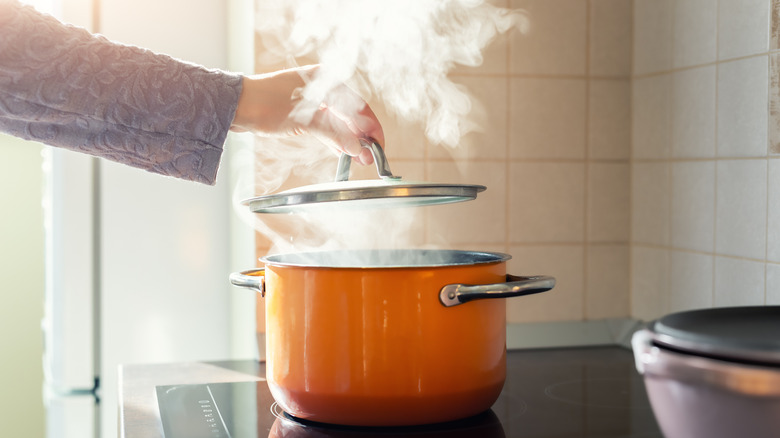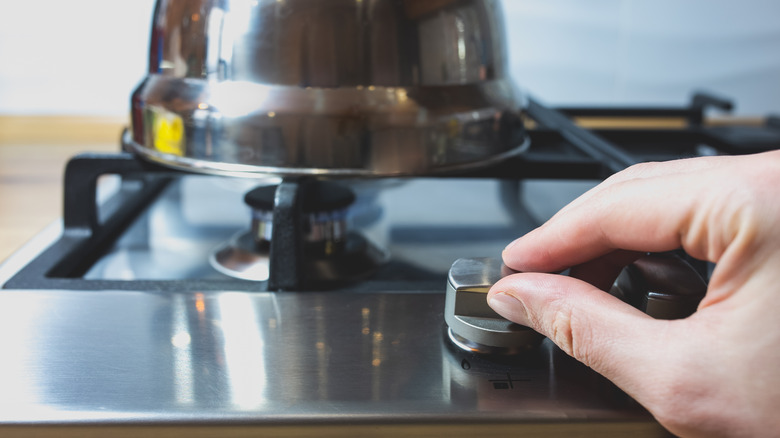The Perfect Temperature For Soup, According To Science
Soup is the ultimate winter comfort food — at least, it can be. Have you ever let your eagerness for a lovin' spoonful lead you to a burnt tongue? Chances are you won't wait until it cools down to take that first bite. On the other hand, diving into a bowl and finding it lukewarm is equally unwelcome. Especially during the most bone-chilling months of the year, when soup hits the table more and more often, it can seem like that perfect mouthful almost never shows up for dinner. What gives?
Luckily, from the same folks who explained chicken soup's almost magical healing properties, science is back! This time, it's rolling out the details on how to enjoy your favorite cold-weather comfort like never before.
Considering soup is, by definition, a combination of ingredients in broth, it makes sense that each of these ingredients has its own flavor profile. And unsurprisingly, each ingredient is uniquely affected by temperature. Tomatoes are some of the most-cited vegetables for impressionability to climate. According to Smithsonian Magazine, even base levels of refrigeration deactivate the enzymes responsible for the fresh tomato aroma we know and love. And it isn't just vegetables that vary: Gouda is a cheese best served firm, but nobody wants to find firm brie on their charcuterie board. Even ales and lagers are fermented and stored at different temperatures. So, what is the sweet spot when it comes to soup: just the right place between scalding and tepid?
What's the ideal temperature for soup?
If beauty is in the eye of the beholder, and soup is a thing of beauty, then surely personal preference plays a role in determining ideal temperature. Eat your soup (not to mention gazpacho) however you like! Of course, if you're on the hunt for objective soup-eriority, the Journal of Food Science offers numbers. A study conducted by mechanical engineer John Abraham estimates that the most-preferred temperature for serving hot liquids is between 136 and 162 degrees Fahrenheit (about 57 and 72 degrees Celsius).
In "Analysis of Sensory Properties in Foods," MDPI Foods found that the tongue's pain threshold tends to sit right in the middle of that spectrum, at around 153 degrees Fahrenheit. Vegetable-based soups can be comfortably enjoyed on the cooler end of the range, while soups featuring meat should be prepared a little hotter. FoodSafety.gov states that the safe minimum temperature for beef is 145 degrees Fahrenheit, and 160 degrees for chicken. Conveniently, higher temperatures are also those at which ingredients like beef become their most fragrant.
Enjoying a bowl of soup is as much about the actual meal as it is about the sensory experience: the warmth and the aroma. The hotter the better — without getting burnt! So, next time you bust out your classic, tried-and-true soup recipe (or find a new favorite!), keep the temperature in mind. Leave the burner on for an extra few minutes, or step away while it cools. We think you'll find that your patience pays off.

